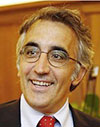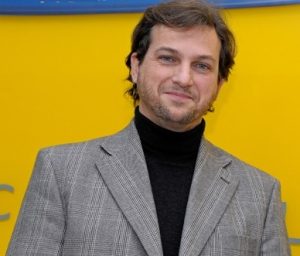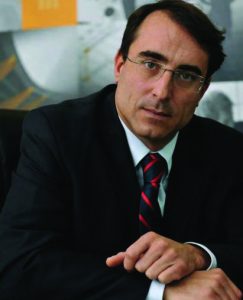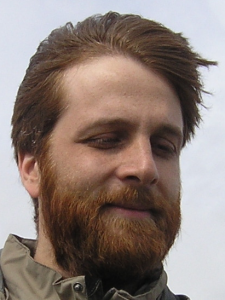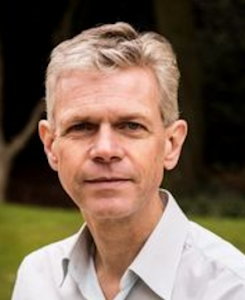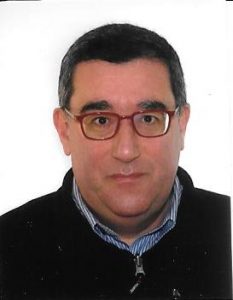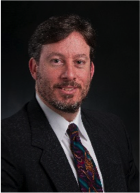Giovanna Parmigiani, VP, Confagricoltura
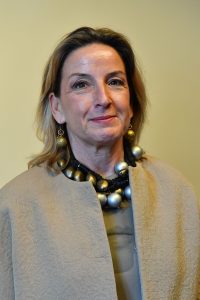

Presentation: CONFAGRICOLTURA: Major Player on Agri-Food Innovation
Having innovative and, more recently, a digital agricultural system is one of the main goals of our Confederation.
The innovation strategy of Confagricoltura aims to strengthen the development of the whole system through cooperation, training and knowledge transfer and capability to innovate. The farmers’ real needs are crucial to draw new skills and knowledge and to develop technologies able to improve both sustainability and competitiveness of their companies.
Considering the competitive advantage of our farmers as the main stimulus to foster innovation, the better way to improve companies’ market positioning and economic growth is the adoption of both products and processes innovations. Eco-innovation, bio-economy, circular economy and climate change and renewable energies are strategic themes for the entire sector.
In this context, the digital issues and the concepts of smart land and smart farm are instruments to reach these innovative goals but they are still very far from the farmers. In fact, there are many obstacles on this path, both technical and strategic: the great fragmentation of the agricultural sector, the digital policies, the infrastructures theme and the adequate signal coverage, the big data requirements, the training and information transfer, the problems related to the traceability of productions.
Confagricoltura believes that the success of these policies will play an important role towards an increasing competitiveness of our companies and in general the growth of the entire agricultural
sector in the future.
Angelo Riccaboni, Ph.D., University of Siena and Chair PRIMA Foundation
Angelo Riccaboni was Rector of the University of Siena, one of the oldest European universities, founded in 1240. He was also President of CRUI, the Council of all the Rectors of the Italian Universities. Research and teaching at the University of Siena are particularly focused on sustainability issues, as testified by the creation of NESSO, Network Sustainability Siena, an Interdisciplinary Center dedicated to the environmental, social and economic sustainability. Angelo Riccaboni is professor of Corporate Governance and Management Control Systems. His research interests focus on mechanisms and processes supporting the implementation of organizational objectives, in line with a social and environmental perspective, and on the process of change in universities. On these topics he has published articles on international journals such as Accounting, Organizations and Society, Management Accounting Research and Journal of Management and Governance and monographs printed by Elgar, Kluwer and Rutledge. He was a Visiting Scholar at the University of Southern California (Los Angeles), INSEAD, London School of Economics, University of Wales, Bangor (United Kingdom), Columbia Business School, and DePaul University Chicago.
With a budget of 500 million euro for the next 10 years, the PRIMA initiative represents an important tool for the promotion of dialogue and cooperation between Euro-Mediterranean countries and for their sustainable and long-lasting development. The presidency of the Prima Foundation is Italian with the election of Angelo Riccaboni, Professor at the University of Siena and coordinator of the PRIMA Consortium on behalf of the MIUR-Ministry of Education, University and Research. The Foundation is responsible for carrying out the implementation of PRIMA-Partnership on Research and Innovation in the Mediterranean Area, the Program for innovation in the water and agro-food systems in the Mediterranean area, has been officially set up in Madrid
Presentation: Innovation in Food Systems to Deal with Mediterranean Challenges
The Mediterranean region is facing a wide range of challenges arising from the combination of climate change, population pressure, loss of biodiversity, growing economic inequalities, fragmentation of food supply chains, changing dietary trends, food and nutrition insecurity, political instability and migrations.
In order to deal with such issues, more sustainable food systems need to be implemented, as they can give a crucial contribution for more stable, prosperous, environmentally friendly and healthier Med societies, with the adoption of technological, social and organisational innovative solutions by communities, enterprises and consumers.
To achieve such goal, the following conditions must be fulfilled.
- To increase cooperation among researchers, innovators and enterprises also from different Countries.
- To facilitate at a local level the conditions of innovation, reinforcing ties and cooperation among smallholders, farmers, enterprises, extension services, consultants, innovators, institutions, investors, research centers.
- To induce a fairer distribution of profitability along the food value chains.
- To involve youth, consumers, entrepreneurs, policy makers in education programmes dealing with the features and potentialities of food systems.
In short, multi-stakeholder and international cooperation as well as innovative developments in terms of education are fundamental to boost socio-technological innovation and sustainable Food Value Chains.
The Research and Innovation joint-programme PRIMA (Partnership for Research and Innovation in the Mediterranean Area), with a 500 milion budget over 7 years and the participation of research centers and enterprises from 19 Euro-Mediterranean Countries, represents a concrete action aiming at identifying, spreading and implementing sustainable innovations into the Med agro-food systems through public-private partnerships, in order to tackle current and emerging regional challenges in the decades to come.
The PRIMA Observatory of Innovation and the production of a Massive Open Online Course on Sustainable Food Systems are the first concrete contributions by the PRIMA Initiative, waiting for the future outcomes of the research initiatives just launched.
Antonio Marzia, VP Connected Services, CNH Industrial
In 1996, Antonio Marzia started his career in CNH in the Purchasing sector, where he assumed different responsibilities until becoming the Global Purchasing Director. He contributed to the renewal of the full tractor line during the period in which he has been responsible for the global tractor product line. He pursued his career as Vice President New Holland Marketing Communication, and in 2013, he took the responsibility of the Precision Solutions and Telematics Business Unit in CNH Industrial; dedicated to develop and commercialize advanced technologies in agriculture, construction and commercial vehicles. From August 2016, he is at the head of a new business unit called “Connected Services” where he is in charge of developing IoT-related technologies and value-added services based on the analysis of the data created by the machines.
Presentation: AG (Re)Evolution
This presentation aims to analyse the new era of digital transformation (Agriculture 4.0) in the farming industry, exploring automation and autonomous operation of Agricultural Equipment, and assessing value proposition of these new technologies that address the expectations of farmers in transforming their business practices.
Objectives:
- Provide an overview on the Agriculture evolution, highlighting the growing adoption of digitalization in farming operations.
- Analyse the digital ecosystem where the enabling technologies will need to work together seamlessly for digital transformation to be effective.
- Point out the Connected CNH Industrial program, where data, flowing from vehicles, are transmitted through a telecom network to a Cloud storage and infrastructure, and are made available for elaboration and statistical/historical analysis, enabling 3rd party services integration.
- Provide an overview of the data ecosystem complexity, which represents an highly dynamic space, with new entrants daily enabled by traditional companies, venture capital and private equity.
- Present the CNH Industrial Digital roadmap and the state of the art, from IoT&Cloud, passing through Edge technology, to Artificial Intelligence, which is the step forward towards Autonomous Vehicles.
Francesco Barletta, Innovation & Market Development, Wind Tre S.p.A.
Francesco Barletta is the Head of Innovation & Market Development at Wind Tre. He leads a team focused on designing and developing the next generation solutions offering, the digital channels and the on-field promotion programs for the B2B and B2G Markets.
In this role, he also manage the open-innovation strategy through commercial partnerships with top Brands, start-ups, research centers & Business schools in order to amplify the Wind Tre Business brand portfolio. Francesco joined Wind in the start-up phase, covering various roles in Marketing and Sales. In the Consumer Sales area, he gave a significant boost in redesigning the distribution network with the introduction of multi-channel tools and methods, launching the Digital Transformation process.
Francesco has a degree in Information Science, with a Master’s degree in Media & Telco from Milan Polytechnic University.
Presentation: Wind Tre Business Innovation for Modern Agriculture Management: How Smart Connectivity will Empower Business Transformation Solutions
Smart farming isn’t just a technical innovation, it is absolutely necessary to help to feed an everincreasing population struggling with the stresses of climate change. Telco role in precision agriculture and smart farming is huge as quality network and cutting edge technology is the conditiosinequanon. In this regard Internet of Things (IoT) technology is expected to play a significant role in enhancing agricultural productivity to meet food demand.
As there are two clear submarkets within digital agriculture, Telco needs to target both, in order to kickstart the market.
Small farmers lack access to advanced technology which their largescale counterparts have. Because of this, they miss opportunities to improve yields and profitability. We scan the market for the bestofbreed agritech partners and translate technologies into basic service sto meet their specific needs: weather and pest models, access to quality advice & marketplaces, integrated mobile&cashless payments and simplified apps. Simple and cheap IoT devices that don’t need expert agronomists knowledge.
In the mid & large farms the landscape changes and smart agriculture incorporates IoT based advanced technologies and solutions to improve operational efficiency, maximize yield, and minimize wastage through realtime field data collection, data analysis, and deployment of control mechanism. Diverse IoT based applications such as precision farming, smart irrigation, and smart greenhouse will be instrumental to the enhancement of agricultural processes.
Andrej Mertelj, CEO, Datalab Agro AG.
Andrej (born 1970) is best described as a serial entrepreneur with a passion for IT. After secondary school, he studied computer science, but dropped out just before graduating to pursue an entrepreneurial career. At the age of sixteen he published the first of many articles, lectures and even books.
Over thirty years of experience in IT and twenty-five in entrepreneurship have given him a unique mix of skills and knowledge, which has made its mark on PANTHEON, the leading SME ERP in Southeast Europe. His passion is now building SME cloud services with Telcos and bringing the benefits of modern IT to farmers.
Andrej was the chairman of KODA.SI, the Association of Slovenian Software Vendors, he was president of the Slovenian Association of IT and Telecommunications at the Chamber of Commerce of Slovenia, and is a frequent consultant to European Commision on Digital Farming and member of several standardization bodies. He was government advisor in several EURO changeovers, VAT and fiscal register, and one of the boldest opponents of EU’s software patent and ACTA directive. He is a frequent mentor on startup events, CEED and entrepreneurial workshops.
Nils Aschenbruck, Ph.D., University of Osnabrück
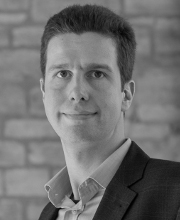

Day 1 Presentation: HOAR: A Hybrid-Opportunistic Architecture for Robust Agricultural Networking
Modern telemetry-based applications enable farm- ers to work more efficiently and to improve the utilization of their farmland. However, connectivity between agricultural machines and central farm management information systems are almost exclusively realized via mobile networks and, thus, suffers from the challenging network conditions, which often characterize agricultural scenarios. Robust networking with reliable commu- nication across multiple machines is one of the fundamental challenges in highly distributed agricultural processes, such as the harvesting of crops.
In this paper, we present the design and evaluation of a new hybrid-opportunistic network architecture that combines multi- ple Internet and ad-hoc machine-to-machine (M2M) connections simultaneously to provide robust and reliable communication in a decentralized network.
Day 2 Presentation: Design and Implementation of an Agricultural Monitoring System for Smart Farming
The integration of modern information technolo- gies into industrial agriculture has already contributed to yield increases in the last decades. Nowadays, the emerging Internet of Things (IoT) along with Wireless Sensor Networks (WSNs) with their low-cost sensors and actors enable novel applications and new opportunities for a more precise, site-specific, and sustainable agriculture in the context of Smart Farming. In this paper, we present a holistic agricultural monitoring system, its design, and its architectural implementation. The system primarily focuses on in-situ assessment of the leaf area index (LAI), a very important crop parameter. Moreover, we introduce real-world challenges and experiences gained in various deployments. Finally, first results are exemplarily demonstrated in order to briefly address the potential of our system.
Manlio Bacco, Ph.D., ISTI – National Research Council
Manlio Bacco received the Ph.D. degree in Information Engineering and Science from the University of Siena. He works as a researcher in the Institute of Science and Information Technologies (ISTI) of the National Research Council (CNR), Pisa, Italy. His research interests include wireless communications, with a focus on satellite and aerial networks, and IoT/M2M communications. He has been participating in European-funded, national-funded, and ESA-funded R&D projects
Presentation: Smart Farming: Opportunities, Challenges and Technology Enablers
Agriculture is taking advantage of the Internet of Things paradigm and of the use of autonomous vehicles. The 21st century farm will be run by interconnected vehicles: an enor- mous potential can be provided by the integration of different technologies to achieve automated operations requiring minimum supervision. This work surveys the most relevant use cases in this field and the available communication technologies, highlighting how connectivity requirements can be met with already available technologies or upcoming standards. Intelligence is considered as a further enabler of automated operations, and this work provides examples of its uses.
Terry Bates, Ph.D., Cornell University
Terry Bates is a senior research associate with Cornell University’s School of Integrative Plant Sciences and the Director of the Cornell Lake Erie Research and Extension Laboratory in Portland, NY. He earned a B.S. in Biology (1992) from St. John Fisher College, a M.S in Horticulture (1994) and a Ph.D. in Plant Physiology (1997) from the Pennsylvania State University.
Terry has been conducting viticulture research at Cornell University for the past 20 years with a focus on supporting 30,000 acres of ‘Concord’ grape production in the Lake Erie American Viticultural Area (AVA). One area of his research focuses on optimizing vine growth and production for quality grape production. Contributions include studies on root biology, water and nutrient management, pruning level, and crop load vine balance for sustainable vine production. A second research area focuses on vineyard mechanization to reduce production costs and increase farm profit. Contributions include studies on mechanical pruning, crop estimation, and yield adjustment in commercial production. In 2014, Terry was awarded the inaugural Extension Distinction Award from the American Society for Enology and Viticulture.
Currently, Terry is the national project leader on a USDA Specialty Crop Research Initiative funded project: Precision Vineyard Management: Collecting and Interpreting Spatial Data for Variable Vineyard Management (2015-51181-24393). The “EfficientVineyard” project integrates a team of engineers, precision agriculture specialist, viticulturists, economists, and extension educators with the goal of translating spatial sensor data into usable viticulture information for variable rate mechanized applications in commercial vineyards.
Presentation: Spatial Data Driven Variable Rate Crop Adjustment for Improved Vineyard Crop Load Balance
The purpose of this presentation is to illustrate the use of sensor-derived spatial data in generating vineyard management classifications and applying variable-rate vineyard mechanization to improve vine balance and fruit quality. In a commercial ‘Concord’ vineyard in western, New York, proximal sensors were used to generate spatial maps of soil electrical conductivity, canopy normalized difference vegetative index (NDVI), and crop weight. Local block kriging was used on all raw spatial data layers to predict values to a common grid which approximated the vineyard row and vine spacing so that relationships between data layers could be interrogated and to determine which layers were indicative of overall vineyard production. Cluster analysis (k-means) was used to generate three management classifications in the vineyard and stratified manual viticulture sampling was used to predict the vine size and crop size in each region. In viticulture, “crop load” is the relationship between vine fruit yield (crop size) and vine vegetative growth (vine size). The Ravaz Index (RI) is the measured relationship between vine crop weight and vine pruning weight, is an indicator of crop load, and has representative target values for vineyard managers to achieve vine balance. In this case study, each of the identified vineyard management classifications had relatively high RI, indicating over-cropped vines, and mid-season fruit thinning was needed to bring the vines into proper crop load balance. Each management classification, however, required a different level of fruit thinning to target similar RI values. To achieve variable rate fruit thinning, a spatial prescription map was generated and interfaced with precision agriculture hardware/software which, in turn, controlled the hydraulic flow to the shaker head on mechanical harvester. On-the-go variable-rate fruit thinning shifted the population mean 34% toward target RI values and decreased the standard deviation by 30% indicating that the vineyard was more balanced and more uniform at harvest.
Luca Davoli, Ph.D., University of Parma
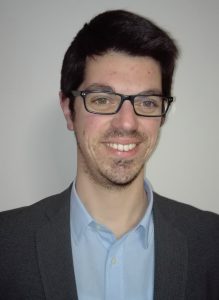

Presentation: An IoT-oriented Monitoring System for Smart Agriculture Applications
Smart Agriculture is one of the Internet of Things (IoT) applications with the highest development opportunities. It is extremely important since it aims not only at increasing the amount of produced goods, but also at reducing agriculture envi- ronmental impact through the collection of biometric information on the monitored crops. In this paper, an IoT system, based on IEEE 802.15.4 and Sub-GHz communication protocols, and with the aim of monitoring trees by collecting parameters, such as soil moisture, air temperature, wild intensity, etc., is proposed. The joint application of these technologies simplifies the work of the farmers, which can remotely manage their crops, taking more effective measures thanks to collected data. The proposed system is experimentally tested with a low-cost implementation, verifying the proposed approach and the feasibility of the underlying architecture, motivating further developments in these scenarios.
Adam Drobot, Chairman of the Board, OpenTechWorks, Inc.
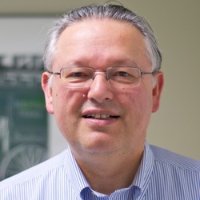

Adam has published more than 100 journal articles, and is a frequent contributor to industry literature. He currently holds 26 patents. Adam is the 2007 recipient of IEEE’s Managerial Excellence Award. He is currently a member of Several Corporate Boards, and he is a member of the IEEE Awards Board and also Chairs the Awards Recognition Council for the IEEE. He is a member of the FCC Technological Advisory Council and has recently Co-Chaired the Working Groups that addressed: “Sun-setting the PSTN”, “Technology Futures”, and most recently “Broadband Deployment Technology Challenges”. Adam is on the Board of the Telecommunications Industry Association where he Chairs the TIA Technology Committee. He holds a BS in Engineering Physics from Cornell University and a PhD. in Plasma Physics from the University of Texas.
Presentation: IoT and Agriculture 4.0
Bruce Grieve, Ph.D., University of Manchester
Prof Grieve is a Fellow of the Institute of Engineering & Technology, a Fellow of the Institute of Agricultural Engineers and a Fellow of the Higher Education Academy, and holds the N8 Chair in Agri-Sensors & Electronics. Before joining the University of Manchester, as Director of the e-Agri Sensors Centre, he gained 18 years of industrial experience in the fields of on-line analysis and measurement R&D; including deployment of sensors and informatics systems within new integrated products for Sustainable Agriculture & Food. Since 2007 he has attracted over £5.3M of direct industrial, governmental and NGO funding which has been leveraged against a portfolio of £20.4M in collaborative multidisciplinary research projects. Previously Prof Grieve has been the industrial manager on a number of UK Research Council and DTI supported projects. He has been awarded a Royal Academy of Engineering Senior Fellowship to progress his e-Agri research at the University of Manchester and has held a number of funding board roles with UK Research Councils and the Innovate-UK (TSB), including being a nominated member of the BBSRC Agriculture & Food Security Strategy & Policy Panel and the STFC 21st Century Challenges Strategy Panel.
Presentation: e-Agri: Integrating Sensors & Electronic Engineering to Deliver Networked, Low-Cost, Smart Agriculture
e-Agri may be defined as the fundamental device engineering, electronics and sensor system design to help deliver future sustainable agriculture and food systems. The paper will introduce the concepts and motivations behind e-Agri and illustrate these with a series of research examples from the group, of the same name, based at the University of Manchester (UK). This is the only dedicated agri-sensors engineering group to be based within a significantly-sized School of Electronic & Electrical Engineering (c.80 academic staff). The paper will draw upon existing industry-sponsored research in the group, notably related to: Sub-surface impedance tomography, Networked fungal pathogen sensing, Mass producible low-cost wireless nodes for soil monitoring, High-sensitivity graphene-based protein-receptor biosensors and Close-proximity active hyperspectral imaging. These will be used to exemplify how engineering research can be translated from none agri-food duties, re-engineered and then integrated with plant science and agronomy research to create novel ‘smart farming’ technologies.
Diego Guidotti, Co-Founder Agricolus s.r.l.
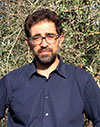

Diego Guidotti is the co-founder and R&D manager of Agricolus s.r.l. an innovative startup working in Precision Farming. He has over 15 years of experience in designing and developing ICT solution to support farmers and agronomist in Decision Making. After a MS Degree in Agricultural Sciences he earned a PhD in Scuola Superiore Sant’Anna of Pisa with a thesis on Information and Communication Technology in Agriculture. In 2001 he founded Aedit s.r.l. an academic spin-off company of Scuola Superiore Sant’Anna working on developing Decision Support Systems on pest management. He has managed the design and the development of several IT solutions adopted by local regional authorities, multinational agro-food companies and farmers cooperatives and organisation. He participated in several research projects working mainly of transferring the research results in actual tools used by final users. Since 2015 in Agricolus he is supporting the R&D of the products integrating Data Scientists, Agronomists and Developers working for developing new smart agriculture solutions.
Presentation: Agricolus – A Platform to Make Precision Farming Easier
Agricolus is a platform that integrates a Farm Management Information System with sensor data, IoT networks, tools to support farm monitoring, models on crop, pest and soil conditions, Remote Sensing, and Decision Support System (DSS). The mission is to help farmers, agronomists, agri-food processors and other agricultural operators in optimizing agronomic practices, by using the most innovative technologies of data collection and analysis.
Agricolus is a general platform with vertical advanced solutions on specific crop. We present the vertical platform to support the decision of olive growers. The platform has several modules addressing specific farming issues.
A Monitoring section supports farmers in field spatial data management, keeping track of field operation and of the monitoring activities. All the collected data interact with the DSS providing input data to the specific models. An irrigation support system estimates plant water requirements on a daily basis, the soil water content and the water stress risk to schedule olive irrigation. The DSS integrates an olive phenological model estimating the plant development phases according with temperature (degree day). Another module estimates the plant nutritional requirements to support the fertilisation plan. A specific DSS is dedicated to olive fruit fly integrated pest management. The DSS, developed with Scuola Superiore Sant’Anna and Tuscany Region Phytosanitary Service, supports olive growers during the season estimating: olive fruit fly adult emergence in spring, risk of infestation by the first summer generation of the pest estimated with temperatures of winter and spring, phenology and the development of pest generations in summer, mortality caused by summer high temperatures, fertility due to environmental conditions. Finally, a Remote Sensing section allows farmers to assess the vegetation health and the water stress index using constantly updated satellite data for the whole farm.
Alexander Kocian, Ph.D. University of Pisa
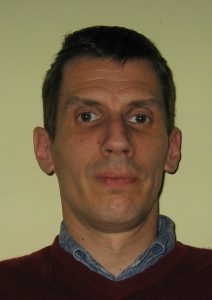

Dr. Kocian has participated in numerous national and international research projects. He is also co-organizer of the IEEE 1st European Conference on Satellite Telecommunications in 2012.
His research interests are in Foundations of probability and statistics, Machine learning, Analog and Digital Signal Processing, Ambient Intelligence.
Presentation: Information Technology Controlled Greenhouse: A System Architecture
The technological level of greenhouse cultivation, especially in the Mediterranean countries such as Italy, Turkey, Greece and Spain, is low, despite protected crops are of considerable importance both for extension and for the production of fresh foodstuffs and for exported ornamental plants.
The project “HouseGarden High Tech” intends to increase the technologies of greenhouse cultures by the creation of an integrated network of sensors and automation technologies, controlled by an ICT (Information and Communication Technologies) approach, for the agronomic development of horticultural crops. In the High Tech greenhouse, innovative technologies will be tested, in order to stimulate the growth and development of plants with optimized use of chemical products.
In particular, High Tech greenhouse is designed to manage, in a controlled and efficient way, different types of crops with different cultivation needs. The High Tech greenhouse is a versatile and multifunctional environment, equipped with sensors and monitoring systems that allow the acquisition of data and information processed by a specially designed “computer brain”, to perform effective active controls (e.g. in retro-action), thus optimizing crop management and providing a useful decision support tool.
In this High-Tech greenhouse, an innovative technology is used, the Non-Thermal Plasma technology (NTP), to generate ionized gas streams, to treat plants and irrigation water with sanitizing and stimulating properties of growth and vegetative development.
The ICT based control and management of data automates the cultivation of crops and nursery products in a short and controlled
time, using specific mathematical yield models that are developed throughout the project.
Srđan Krčo, Co-Founder & CEO, DunavNET
Dr Srđan Krčo is a co-founder and CEO of DunavNET, a company designing turnkey IOT solutions for smart cities, agriculture and manufacturing. He has over 20 years of experience, working with large multinational companies and international collaborative research and innovation projects. Currently, he is coordinating a research and innovation H2020 project TagItSmart, creating IoT enablers facilitating improvement and transparency in the food supply chain and more general in the FMCG domain. Srdjan is one of the founding members of the International IoT Forum and is actively participating in IoT-EPI (IoT European Platforms Initiative) and AIOTI (Alliance for IoT Innovation) activities. In 2007, Srdjan won the Innovation Engineer of the Year award in Ireland. He has published over 15 patents and more than 70 papers at international conferences and journals. He is a frequent speaker at international events addressing IoT and its applications. Srdjan is a Senior IEEE member. Recently, he was awarded MVP (most valuable professional) status for IoT activities by Microsoft.
Presentation: Digitizing Agriculture and Food Supply Chain: Lessons Learnt
Smart agriculture and food supply chain solutions are starting to reach the market. As with any new technology, the initial steps are not always smooth. The feedback from the field, the challenges faced and approaches to resolve them, represent an important input to improvement of the solutions and consequently larger adoption. In this presentation, an overview of the most important lessons gained from deploying smart agriculture solutions as well as from running food supply chain pilots in the context of H2020 TagItSmart project are presented.
Dr. Andrea Lari, Business Development Manager, Pessl Instruments GmbH
Andrea Lari is currently holding a Business Development position in Pessl Instruments GmbH (Weiz, Austria). Based in Milano he is responsible for key accounts in the telecommunications and agrochemicals business in Italy in addition to the management of start-ups, innovative companies, distributors and direct sales in the North Western territory. He has more than 20 years of seniority in marketing, sales and development roles in multinational agrochemical companies. He holds an M.Sc. in Agriculture from University of Milano.
Presentation: Thirteen Years of Experience with IoT for Plant Protection in Viticulture: Experiences, Actual Strategies and Future Solutions
Since 2005, connected vineyard has become one of the main areas of activity of our company. Weather data and soil (moisture but also temperature, EC and fertility) are our main activity fields. The former are used to plan a correct plant protection calendar based on disease models and Decision Support Systems allowing the choice of the best timing for application. Data are used by Pessl Instruments on its proprietary platform ng.fieldclimate.com accessible via internet and mobile apps and, thanks to easy API access, to third parties.
Soil moisture and other soil data are used to plan irrigation (or fertigation) schemes where this is possible (irrigation available and admitted by wine production protocols). Available services are: Warnings and information about climatic hazards, Plant disease, and Soil moisture and climatic information relevant for vine quality.
Recent communication protocols (4G and NBIoT) allow the deployment of additional systems. Some of them already available for farmers, like electronic traps (for Grape Berry Moth or Spotted-Wing Fly (Drosophila suzukii)) and some, like FieldScan, a scanner for soil parameters evaluation and MobiLab a portable soil laboratory, that will soon reach the market.
Gianni Lisini, Ph.D. VP, Ticinum Aerospace S.r.l.


Presentation: Saturnalia: Quality Prediction for Fine Wine through Spaceborne and Ground-based Monitoring of Vineyards
In this paper we describe Saturnalia, a service for quality forecasting of fine wine through intensive monitoring of vineyards from space and from ground. Its big advantage over existing quality assessment techniques consists of forecasting wine quality before publication of official reviews which highly impact on price. Saturnalia first emerged as the winning idea at the 2016 Space App Camp of the European Space Agency, and reached the final round at the ESA SAP App Camp Barcelona 2016, with a demonstrator shown at the co-located World Mobile Congress 2016. The idea has also won the “Big Data, Big Business” challenge by CGI at the 2017 edition of the Copernicus Masters initiative, and is currently being furthered under a European Space Agency funding scheme termed ESA Kick-Start Activity.
Alessandro Mazza, Ph.D., CNR IBIMET Institute
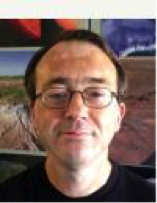

Presentation: Real-time High Resolution Rainfall Maps from a Network of Ground-based Interactive Satellite Terminals: The NEFOCAST Project
Rainfall estimation and its spatial distribution are key elements for agriculture. Actually, rainfall maps over cultivated areas are needed for efficient water resources management, while prediction and monitoring of severe precipitation events are required for the estimation of possible damages and risks for crops, animals and infrastructures.
Ing. Francesco Mazzola, CEO & CIO, T.net Italia S.p.A.
Francesco Mazzola, graduated in Electronic Engineering at the Politecnico di Milano in Italy and attended several postgraduate degree programs.
He has performed his first experience as an expert in multidisciplinary engineering at Snamprogetti (ENI) of San Donato Milanese and then at Agip Petroli of the same group.
CEO and CIO of T.net Italia since 2002 he has leaded T.net, a private held company, into ambitious projects, such as the Oncology Network of Eastern Sicily, whose project received in 2008 in Cernobbio (Italy) the award as an Excellence in Health Digital Information Systems while in 2014, an advanced Hybrid Cloud Project became an Emear Case Study of Cisco Systems.
Since 2007 he has been working on cognitive computing, machine learning (HIS, Pollution Air Modeling) and Software Defined Network development. In 2015 he started the IOT Business Unit of T.net Italia and he is actually involved in building the Middleware Infrastructure and developing the Software Defined Radio to let IOT Sensors talking efficiently to ITS in Smart Road and Smart City context optimizing V2X Communications. He’s also Tech Leader with the University of Catania (IT) in a Smart Farm (Precision Lifestock Farming) Internet of Things Solution and Application named “CowTech”.
Keynoter in several Intelligent Transportation Systems Conferences and Events, he is also Senior Member at IEEE and in the IEEE Smart Cities Working Group.
Presentation: IOT for Smart Agriculture – Precision Lifestock Farming in the Dairy and Meat Industry – The “Cow-Tech” Project
Precision Agriculture can help Farmers to produce more with less so making important savings in Animal Husbandry. We’ve taken into account the Dairy Area in the Southernmost part of Sicily to test the application of this technology that our estimate forecast it can help farmers to save an average of 1000 Euro/year for each head of cattle.
The framework under development with the technical support of the Department of Agriculture, Food and Environmental Sciences of the University of Catania includes a low cost Multilayer Low Power IPV6 IEEE 802.15.4 Network Infrastructure commonly known as 6LOWPAN and wearable IOT sensors applied to cows.
Each cow, but this can be applied to poultry and pig breeders too, wear a smart collar, which by default has and infrared sensor and a 6 axis gyroscope, optional GPS if animals are supposed to graze instead of being fed in stables. The collars are used to detect movements and (optionally) animal positions while using mathematical animal modeling stored in the Cloud we’re able to: Increase milk yield, Reduce Labor Cost, Prevent Diseases, Improve herd health, Optimize breeding, Improve Reproduction Rate, Better handle Stress Management, and Feed Optimization.
4.0 Farmers can use their smart phone, tablet or smart glasses to monitor animal status, digital perform or report action like applying prescription or feeding and much more. As an option, a real “Cow Operation Center” can be delivered to get at a glance the “cow status”.
Giorgio Mori, President, Mori-Tem S.r.l.
Born in Barberino Val d’Elsa, he lives in Tavarnelle Val di Pesa, Strada Pianacci 1, graduated from the Professional Institute “Cennino Cennini” of Colle Val d’Elsa, married to Patrizia Turchi and is father of Patrizio; he started an artisan activity in 1974 with his father Franco. In the beginning the company activity mainly consisted of repair of agricultural machinery, but in 1976 it also involved the design and construction of machinery for the wine sector:- in 1976 he designed vertical crushing and destemming machines V.1 and V.2, which were put into production in 1997
– in 1977 the machines were more oriented to the hobby (Baby 25, F40, L60) sector
In those years, in parallel with an innovative crushing-destemmer with direct transfer of the hopper (R100), he produced the Alfa vertical hydraulic press with a double-acting piston, a machine still in production today.
At the end of the 70s he built the first factory (800 sq. M.) in the industrial area of Tavarnelle Val di Pesa – Località Sambuca – in 1981 the works ended and production began. The company hired 2 young employees and a mechanical expert and purchased various sheet metal working machines.
In the early 80’s there was a methanol wine scandal, which soon brought many people to produce their own wine; in that period he realized and put on sale a small destemmer with a built-in pump (Delta 20-30), still in production and of which thousands of pieces have been sold all over the world. Also the Jolly filter (with 20×20 plates) and Comby linear fillers – small machines for small cellars – date back to that period and are in production and exported all over the world still today.
In 1980 he attended a specialized course for designing on Pc Draft.The project of a small traditional oil plant using the Alfa press with extractor and a small “IDEA” decanting separator – further to continuous requests from customers – dates back to 1984. With a simple tank with a higher conical shape and with the push of the water from below, the oil was separated from the water contained in the olive with extreme ease. In those years the employees had gone from 8 to 10 units. In 1988 the company exported 20% of its turnover and needed more work space; a factory of more 800 square meters was purchased. The innovative project called OLIOMIO dates back to 1993, a patented brand, which was the most important developed until today. In 1996 the first machines went on sale and it was a great success. In 1997 Mori attended a solid design course with Solid Works. In 2005 Spremoliva was created, a family olive oil extractor that occupies the space of an electrical appliance. In 2008, a new automatic continuous filter for the filtration of olive oil was developed. Also in 2008, the company started the production of dates machinery, acquiring an important order from an Egyptian state company.
Currently Giorgio Mori is the President of the company Mori-Tem S.r.l, located in Via Leonardo da Vinci 59 in Tavarnelle Val di Pesa, born from the merge of Toscana Enologica Mori s.n.c. with OMEGA s.n.c. company. Mori-Tem S.r.l. produces machines and systems for oenology and for the oil sector, continuing the tradition of artisanship to design and implement innovations nowadays supported by modern computer design techniques. 65% of the turnover is exported, the current employees are 38. Mr. Morii holds five patents.
Presentation: New Technology in Olive Factory
Luís Nóbrega, Ph.D., Telecommunications Institute of Aveiro, Portugal


His thesis, entitled “IoT technologies for animal grazing and posture control” is in the scope of the SheepIT project, that aims at allowing the use of herds of sheep to weed vineyards and similar cultures. Besides the professional experience in the area of telecommunications, he is now focused on IoT solutions, particularly in the context of low power communication solutions.
Presentation: Animal monitoring based on IoT technologies
Nowadays, the placement of grazing animals in vineyards requires additional support to the animal husbandry activities. Such support must include the monitoring and the conditioning of animal’s location and behaviour, specially their feeding posture. With such a system, it is possible to allow sheep to graze in cultivated areas (e.g. vineyards, orchards) without endangering them.
The present paper proposes an animal behaviour monitoring platform, based on IoT technologies. It includes an IoT local network to gather data from animals and a cloud platform, with processing and storage capabilities, to autonomously shepherd ovine within vineyard areas. The cloud platform also incorporates machine learning features, allowing the extraction of relevant information from the data gathered by the IoT network. Thus, besides the platform description, some results are presented regarding the machine learning platform. Namely, this platform was evaluated for detecting and defining conditions respecting animal’s posture, with preliminary promising results. Since several algorithms were tested, this paper includes a comparison of those algorithms.
Miguel Pincheira Caro, University of Trento
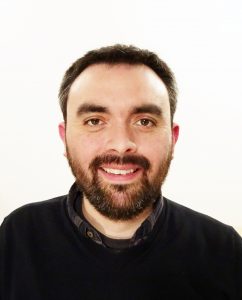

Presentation: Blockchain-based Traceability in Agri-Food Supply Chain Management: A Practical Implementation
The recent, exponential rise in adoption of the most disparate Internet of Things (IoT) devices and technologies has reached also Agriculture and Food (Agri-Food) supply chains, drumming up substantial research and innovation interest to- wards developing reliable, auditable and transparent traceability systems. Current IoT-based traceability and provenance systems for Agri-Food supply chains are built on top of centralized infrastructures and this leaves room for unsolved issues and major concerns, including data integrity, tampering and single points of failure. Blockchains, the distributed ledger technology underpinning cryptocurrencies such as Bitcoin, represent a new and innovative technological approach to realizing decentral- ized trustless systems. Indeed, the inherent properties of this digital technology provide fault-tolerance, immutability, trans- parency and full traceability of the stored transaction records, as well as coherent digital representations of physical assets and autonomous transaction executions. This paper presents AgriBlockIoT, a fully decentralized, blockchain-based traceabil- ity solution for Agri-Food supply chain management, able to seamless integrate IoT devices producing and consuming digital data along the chain. To effectively assess AgriBlockIoT, first, we defined a classical use-case within the given vertical domain, namely from-farm-to-fork. Then, we developed and deployed such use-case, achieving traceability using two different blockchain implementations, namely Ethereum and Hyperledger Sawtooth. Finally, we evaluated and compared the performance of both the deployments, in terms of latency, CPU, and network usage, also highlighting their main pros and cons.
John P. Verboncoeur, Ph.D., Michigan State University
John P. Verboncoeur received a B.S. (1986) in Engineering Science from the University of Florida, M.S. (1987) and Ph.D. (1992) in Nuclear Engineering from the University of California-Berkeley (UCB), holding the DOE Magnetic Fusion Energy Technology Fellowship. After serving as a joint postdoc at Lawrence Livermore National Laboratory and UCB in Electrical Engineering and Computer Science (EECS), he was appointed Associate Research Engineer in UCB-EECS, and to the UCB Nuclear Engineering faculty in 2001, attaining full Professor in 2008. He served as the Chair of the Computational Engineering Science Program at UCB from 2001-2010. In 2011, he was appointed Professor of Electrical and Computer Engineering at Michigan State University, and added an appointment as Professor of Computational Mathematics, Science, and Engineering in 2015. His research interests are in theoretical and computational plasma physics, with a broad range of applications spanning low temperature plasmas for lighting, thrusters and materials processing to hot plasmas for fusion, from ultra-cold plasmas to particle accelerators, from beams to pulsed power, from intense kinetic nonequilibrium plasmas to high power microwaves. He is the author/coauthor of the MSU (formerly Berkeley) suite of particle-in-cell Monte Carlo (PIC-MC) codes, including XPDP1 and XOOPIC, used by over 1000 researchers worldwide with over 350 journal publications in the last decade. He has authored/coauthored about 400 journal articles and conference papers, with about 4000 citations, and has taught 13 international workshops and mini-courses on plasma simulation. He is currently an Associate Editor for Physics of Plasmas, and has served as a guest editor and/or frequent reviewer for IEEE Transactions on Plasma Science, IEEE Transactions on Electron Devices, as well as a number of other plasma and computational journals. He is Past President of the IEEE Nuclear and Plasma Sciences Society, a member of the IEEE TAB Management Committee, and IEEE Division IV Director-elect. He chairs the IEEE TAB SmartAg ad hoc committee. Appointed Associate Dean for Research in the College of Engineering in 2014, he oversees college research activities and strategy. He has been involved in a number of technology startup companies, including development of one of the big three consumer credit reports, work on the hardware and software of the US Postal Service Mail Forwarding System, command and control software in the defense sector, computerized exercise equipment, and a pioneering cloud based health care management system. He is a fellow of the IEEE.
Presentation: IEEE SmartAg initiative: Technology Applied to the Food Supply Chain
Food safety and security are among the most significant challenges facing the planet. Cutting edge technologies, applied to the food supply chain from soil to table, can increase yields, reduce energy, fertilizer, and pesticide usage, and provide real time monitoring of food quality and safety. Variants of these technologies already exist in the IEEE portfolio, and can be specialized to this important new application, while others are ripe for new development. SmartAg can be viewed as an ecosystem of fog and cloud connected systems and devices interoperating to provide local and regional data for improved sensing, decision-making, and action. The goal of the IEEE SmartAg initiative is to support and convene a community of technologists and subject matter experts from across the food supply chain, and facilitate and sustain the convergence of these areas via conferences, publications, educational courses and videos, and entrepreneurship opportunities.
Arturo Vittori, Architect, Designer, and co-founder Architecture and Vision and CEO, Warka Water Inc.
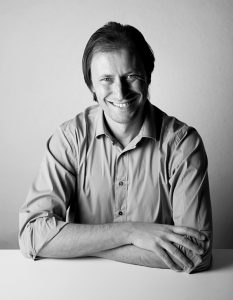

After graduating from the Faculty of Architecture at the University of Florence, he gained experiences collaborating with architects such as Santiago Calatrava and Jean Nouvel. From 2002 to 2004 he was Manager of Cabin Design at Airbus (http://www.airbus.com), in Toulouse (France), taking part in the cabin design for the first A380 aircraft; from 2004 to 2006 he worked with Future Systems, collaborating with Anish Kapoor in the design of the Monte Sant’Angelo subway station in Naples, (Italy), while in 2006 he practiced yacht design at the London-based studio Francis Design.
He has spoken at numerous international conferences on the topics of aerospace architecture, technology transfer and sustainability, and also taught and lead workshops on a variety of related themes. Vittori has been teaching Industrial Design, at the First Faculty of Architecture “L. Quaroni,“ University of Rome La Sapienza, and he teaches a graduate course in Product Design at the Faculty of Arts and Design at the University Iuav of Venice. He is Research Professor at the IIT, Illinois Institute of Technology, of Chicago.
Moe Win, Ph.D., Massachusetts Institute of Technology (MIT)
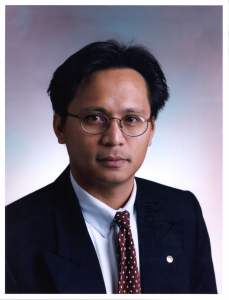

Professor Win is a Fellow of the AAAS, the IEEE, and the IET, and served as an IEEE Distinguished Lecturer. He was an elected Member-at-Large on the IEEE Communications Society Board of Governors (2011−2013). He was the Chair (2004−2006) and Secretary (2002−2004) for the Radio Communications Committee of the IEEE Communications Society. He was honored with two IEEE Technical Field Awards: the IEEE Kiyo Tomiyasu Award and the IEEE Eric E. Sumner Award (jointly with Professor R. A. Scholtz). He received the IEEE Communications Society Edwin H. Armstrong Achievement Award, the International Prize for Communications Cristoforo Colombo, the Copernicus Fellowship, the Royal Academy of Engineering Distinguished Visiting Fellowship, Institute of Advanced Study Natural Sciences and Technology Fellowship, the Fulbright Fellowship, the Laurea Honoris Causa from the University of Ferrara, and the U.S. Presidential Early Career Award for Scientists and Engineers.
Presentation: Localization of Things
The availability of positional information is of extreme importance in numerous wireless applications including autonomous driving, assisted living, Internet-of-Things, crowd sensing, medical services, as well as search-and-rescue operations. The coming years will see the emergence of location-aware networks with sub-meter localization accuracy, minimal infrastructure, and high robustness in harsh (GPS challenged) environments. To reach this goal we advocate network localization and navigation, a new paradigm that exploits a combination of wideband transmission and spatiotemporal cooperation. Our work relies on statistical communication theory and has addressed this problem from three perspectives: theoretical framework, cooperative algorithms, and network experimentation. This talk will provide an overview of our recent research results in this exciting field.
Byung K. Yi, Ph.D., Executive Vice President & CTO, InterDigital Communications, Inc.
Byung K. Yi is InterDigital’s Executive Vice President, Chief Technology Officer. As CTO of InterDigital, Dr. Yi is responsible for directing the development of advanced wireless and network technologies, and the advanced researches related to Robotics, advanced cyber security systems for the IoT systems, and the platform for advanced wireless communications.
Dr. Yi joined InterDigital in April 2014 from the Federal Communications Commission (FCC), where he had served as assistant division chief, in charge of engineering, of polish division since 2012. Prior to his appointment at the FCC, Dr. Yi was at LG Electronics from 2000 to 2012,whereas Senior Executive Vice President he headed the company’s North American R&D center. A former member of InterDigital’s Technology Advisory Council, Dr. Yi contributes more than 40 years of advanced wireless development experience, satellite system designs, and aerospace communication and computer designs.
Dr. Yi also contributes a strong history of industry leadership. He currently serves on the board of directors of the Telecommunications Industry Association (TIA), The Alliance for Telecommunications Industry Solutions (ATIS) and has served on the board of directors or steering committees of a number of professional organizations, including the Center for Wireless Communications, the 3rd Generation Partnership Project 2 Technical Specification Group, and a number of others.
He was awarded the prestigious CDG (CDMA Development Group) Industry Leadership award, been recognized by the National Engineer Week (NEW) Foundation for the “Outstanding Engineer”, and inducted to the Hall of Fame by the School of Engineering and Applied Science of George Washington University.
Dr. Yi received his bachelor’s degree in electrical engineering from Yonsei University (Korea), his master’s degree in electrical engineering from the University of Michigan, and his doctoral degree in electrical engineering from George Washington University.
Presentation: 4th Agricultural Revolution Enabled by 5th Generation Wireless Communications
Alicia Zörner, M.Sc., Fraunhofer Institute for Integrated Systems and Device Technology IISB
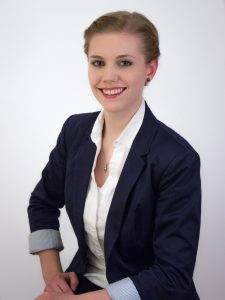

Presentation: LPWAN Underground Sensor Network for Optimized Irrigation
The future of farming will be based on “Agriculture 4.0”. One key element is the digitalization of farming, which is one focus of the Bavarian research project FutureIOT. Within the scope of the project we are working on new concepts covering the complete chain from sensors and sensor networks up to data analyses. In this paper we present our planned work on a sensor network for optimized irrigation, which may be one approach to significantly reduce water consumption in agriculture. Our system will use low-cost autonomous sensor nodes measuring the soil moisture that can be simply buried into the soil in different depths. The resulting high communication path-loss from the sensor nodes to the central node is overcome by using Low Power Wide Area Networks (LPWAN), which allow efficient communication in application scenarios with very high path-loss. Thus, our system will be able to autonomously operate for several years without any required interaction from the user.



